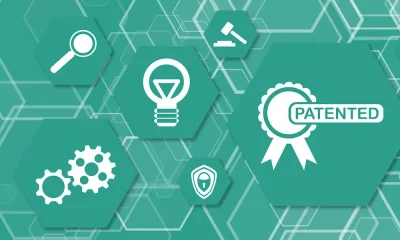Management
How To Handle Business Problems Like A Pro

In every business, no matter the industry, there are bound to be a few problems. In fact, it’s possible to argue that business problems have increased in the past decade.
The main reason for this increase in the frequency and severity of business problems is because of the speed of technological change and economic progress. There appears to be more competition and less time to think about how to resolve pressing problems. Moreover, many long-established ways of doing things no longer work. Continuing to solve 21st-century business problems with the same methodologies Century is a recipe for disaster.
What all this means is that if you get good at solving dynamic business problems, you will be overcome industry-wide problems that are causing your competitors to close their doors. You’ll be able to pull your business out of a rough patch.
Use An Effective Problem-Solving Methodology
While there are many off-the shelf ways to solve problems, which can be learned from books, seminars, and even YouTube videos, these are not as effective as getting formal training in a well-research and thoroughly tested problem-solving methodology. One highly effective methodology is lean green belt training. Since it is highly detailed, it’s difficult to grasp it by simply reading a book or attending a seminar for a few days. Certified training is necessary to learn how to use this methodology well.
This methodology has been refined over 25 years. It has been used to help leading organizations around the world resolve pressing problems, and it has turned things around for beleaguered companies, helping them create happier customers, cut costs, save millions, and increase profits.
There are no pre-requisites for enrolling in classes and it’s possible to learn it using self-paced online training. In fact, you can take as long as a year if you don’t have enough time in the day. Once you acquire green belt training, you will be able to select the right project, define the problem, measure the issue, baseline the process, analyze the situation, identify the root causes, improve the process, implement the solution, verify your ideas, and maintain the solution.
Think of “Problems” as “Challenges”
Although you may have acquired an effective system of problem-solving, your mindset affects how well you use it. Knowing what to do doesn’t always guarantee that you’ll do what needs to be done. It’s essential to acquire the right attitude to problem-solving, too.
The reason why attitude counts for so much is that the first thing we feel when we come across a problem is a quiet sense of desperation. It’s as if our rate of progress has suddenly slowed down or even ground to a screeching halt. Worse still, the problem may involve some losses. Business problems also imply an existential threat to our business: we feel that if we don’t manage to resolve the problem, our business might collapse.
Although all these feelings are natural, they aren’t productive. The best attitude to have when you come across a problem is that it’s an opportunity to step up our game and get to a new level of business growth. In other words, it’s not a “problem” but a “challenge.” If we overcome this challenge, everything in our business will work even better than it did before the problem arose.
Reduce Bad Decisions
While a problem-solving methodology may help you to create a project to resolve a big business problem and a positive attitude may help you develop the enthusiasm to use it, what about the small day-to-day problems that arise during an average day?
By developing reasoned judgments, thinking logically, and making well thought out decisions, you will avoid creating problems for yourself in the first place. In the course of your busy day at work, it’s only too easy simply accept arguments, opinions, anecdotes, and conclusions at face value. This is the course of least resistance. However, this is not thinking logically.
So what is thinking logically?
- It is not accepting things at face value.
- It is asking questions to see what evidence is involved in making an argument.
- It is asking if an alternative explanation is possible. There may be some missing gaps in the cause-effect chain of an argument.
- It is applying three core skills: curiosity, healthy skepticism, and humility. Curiosity makes you seek new evidence; healthy skepticism invites you to question someone’s opinion; and humility is being open to changing your mind if the evidence you discover runs counter to your earlier conclusion.
When you learn how to think more clearly, you are much less likely to make bad decisions and create problems that could have been avoided with just a small dose of clear thinking.









